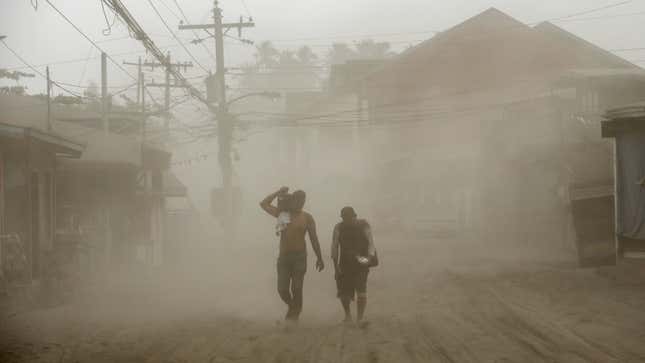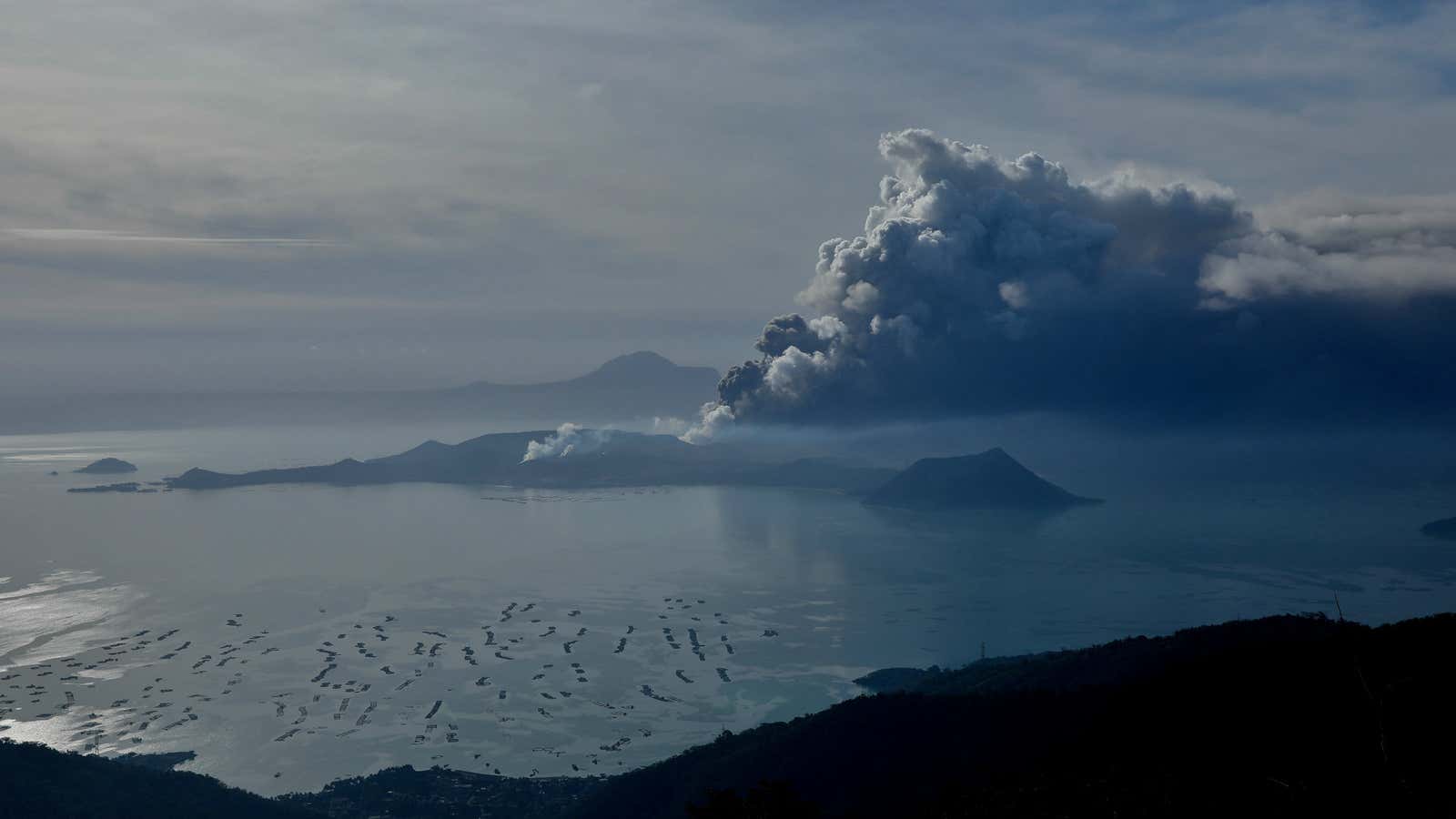The Philippines raised the alert level for the Taal Volcano after it spewed a multi-kilometer high column of smoke and ash, prompting officials to close a Manila’s international airport and call for the evacuation of some 8,000 residents. Lava began flowing early on Monday, and authorities said a dangerous eruption was possible in days or even hours.
Continued volcanic activity could result in a more dangerous eruption. The volcano’s alert level was raised to “Level 4” by the Philippine Institute of Volcanology and Seismology (PHIVOLCS), indicating an “effusive eruption” is underway. “Level 5” is the highest alert, indicating a life-threatening magmatic event that endangers nearby communities.
About 8,000 residents in communities near the volcano required immediate evacuation, according to Reuters. A PHIVOLCS “Level 4” alert indicates a danger zone of 9 kilometers (5.6 miles) or more around the active crater. Manila, the capital, is some 40 miles from the eruption. Flights were suspended to the Philippines’ main international airport, Ninoy Aquino International Airport, by the Manila International Airport Authority. The airport partially reopened on Monday, according to the Manila Bulletin.

The rapid escalation of Taal’s activity caught authorities by surprise, according to a report in the Guardian, citing Maria Antonia Bornas, chief science research specialist at the Philippine Institute of Volcanology and Seismology. Some residents reportedly were unable to move out of their villages because of a lack of visibility, while some authorities worried villagers would seek to return to protect their property before the danger had subsided.
Areas nearby were coated with ash, and some stores were running out of face masks, according to BBC. Philippines authorities have warned stores not to exploit the emergency by hiking prices.
The eruption also risks causing a volcanic tsunami in caldera lakes (formed by a collapsed volcano), like Taal Lake, according to a New York Times report. Such tsunamis can be caused by shock waves and underwater explosions from volcanic activity, Scientific American reported earlier this year.
Taal is among the Philippines’ most active volcanoes, though it hasn’t had a major eruption since 1977, according to Deutsche Welle. In 1911, an eruption killed more than 1,300 people. The volcano island is considered a permanent danger zone.
This story was updated in paragraphs one, three, four, and five on Jan. 13 to reflect the latest events.
